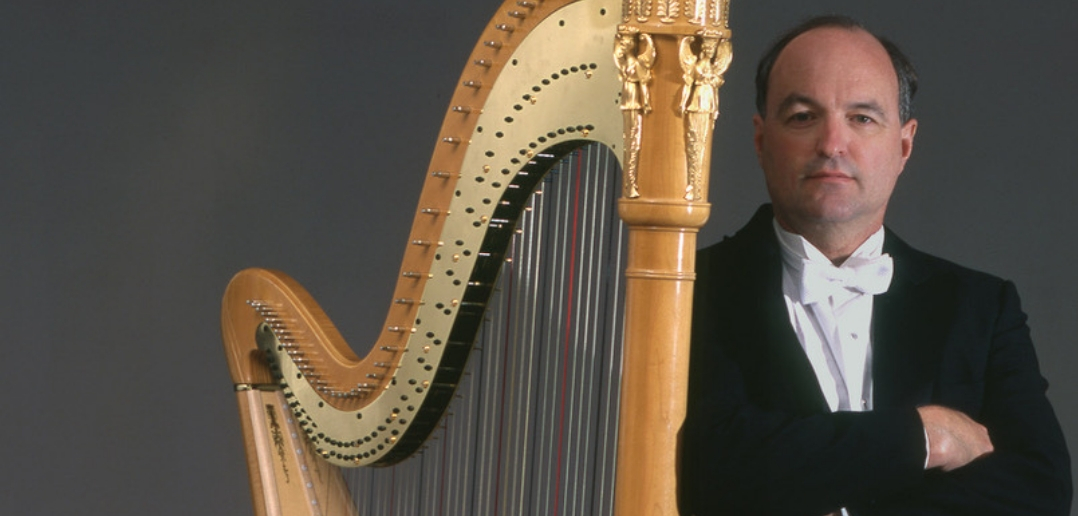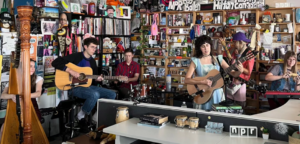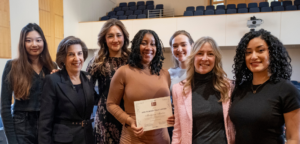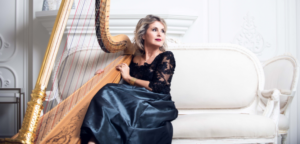Carl Swanson, of Swanson Harp Company, has just announced his latest project: the publication of a new edition of Ravel’s iconic Introduction et Allegro for harp, flute, clarinet, and string quartet. The edition has new solutions to tricky passages, fingering and pedals changes, a preface with historical context, and a “cadenza insert by Grandjany sanctioned by Ravel.” We reached out to Swanson to find out more.
What inspired you to publish a new edition of Ravel’s Introduction et Allegro?
My goal was the same for both the Debussy Danses and the Ravel, and that was to put both pieces into the most playable condition possible. We harpists spend a third of our waking hours figuring out how something can be played, be it a solo piece for harp, an orchestra part, a chamber music part, etc. It shouldn’t be that way. The notation of a piece should show you clearly and instantly how something is played, which hand plays what, which strings to put your fingers on (B# instead of C♮ for example). Our harp music is almost never notated correctly, and there are rarely any pedals written in. In addition, the notation rarely tells you how a passage should actually be played. So these editions are intended, first and foremost, to save the harpist hours of figuring out, marking up, and trying this and that to get to a piece into playable condition.
What resources did you use when researching what you wanted to include in your publication?
 I started of course by looking for the original manuscript. The problem is, the only manuscript that exists of this piece is not the engraver’s manuscript, and it’s clear that Ravel made changes to this manuscript by the time the piece was published. No one knows where the engraver’s manuscript is, and without that, the next best primary source is the full score, because that would have been engraved first (before the individual parts), and Ravel would have proofed the galleys for the full score, but not for the individual parts.
I started of course by looking for the original manuscript. The problem is, the only manuscript that exists of this piece is not the engraver’s manuscript, and it’s clear that Ravel made changes to this manuscript by the time the piece was published. No one knows where the engraver’s manuscript is, and without that, the next best primary source is the full score, because that would have been engraved first (before the individual parts), and Ravel would have proofed the galleys for the full score, but not for the individual parts.
I had my own markings from Pierre Jamet. But Kathy Bride very graciously supplied me with Grandjany’s markings and his metronome numbers for the many tempo changes. I also found an excellent article by David Watkins about the Introduction and Allegro, written in 1993, which was published in the old Harpa magazine. In it were numerous examples of alternate fingerings by Renié, Grandjany, Jamet, Phia Berghout, and David himself. David also talked about other issues as well, such as how to play the glissandi. All of this is found in the preface and footnotes of my edition.
Speaking of, what else can you tell us about the preface?
The two greatest pieces in our repertoire, the Danses sacrée et profane and the Introduction and Allegro, were written two years apart and in a very turbulent time in music history. There was a ferocious battle going on between the academic composers, who were very much backed by the critics of the day, and the younger generation, led by Debussy, who believed a new musical age was dawning. The names of Debussy and Ravel now tower over virtually all composers of that period, but that was not the case in their lifetimes. So much of the preface talks about the context in which these pieces were composed, and how easily we could have ended up with third rate academic compositions instead.
The performance considerations are very important, because if you are not aware of the pitfalls of using two wind instruments, four bowed instruments, and one plucked instrument in one ensemble, you will end up with horrible imbalance between the players, and an inaudible harp. So I talk at length about the issues that have to be addressed for a successful performance.
You mentioned that you published an edition of Debussy’s Danses sacrée et profane, and you’ve also published an edited version of his trio sonata. What do you have next on your radar?
Haha!! I never know with each completed project if I’m going to be invited to do more! So I hold my breath each time and hope for the best. I got my first copies of the Ravel last week and immediately sent a letter to my editor and the president of Carl Fischer Music thanking them for such a beautiful edition and for giving me carte blanche to include everything that I wanted in this (and all of the other editions). I heard back from my editor and he asked me if I had any projects that I wanted to do in 2019!!! So I’m still employed! I just sent them a letter outlining two projects that I have in mind. I’ve talked to a couple of harpists about these projects and they LOVE both of them. But for the moment, I’m not saying anything. If either one of them is accepted, I think you will all be very pleasantly surprised.
That sounds really exciting! Anything else you’d like to add?
In the letter I sent last week to Nick and Sonya (my editor and the president of Carl Fischer) I said the following: With all of these editions, my goal has never been to tell anyone how to play these pieces. Rather, it has been to provide as much information and context as I can so that harpists can make their own informed decisions as to how they want to play them. Anyone working from one of these Carl Fischer editions is working from a score that exactly replicates what the composer intended, without any alterations or additions by me or anyone else. The fingering and pedals that I added, the measures that I renotated, and the alternate fingerings from Grandjany and Renié and others that I included are there only to help the harpist learning it save time, and to make the piece sound the way the composer intended it to sound.
For more of Swanson’s publications, visit https://www.swansonharp.com/. To purchase the piece, click here.













